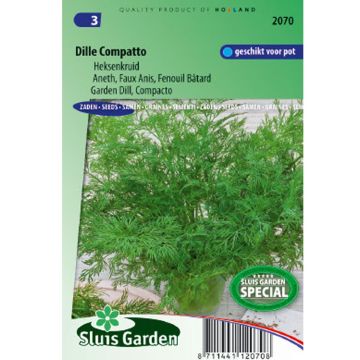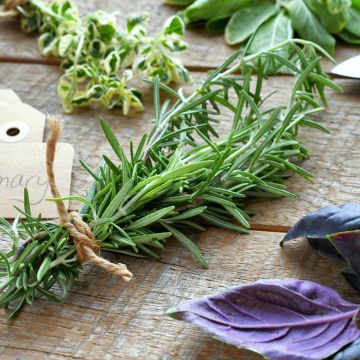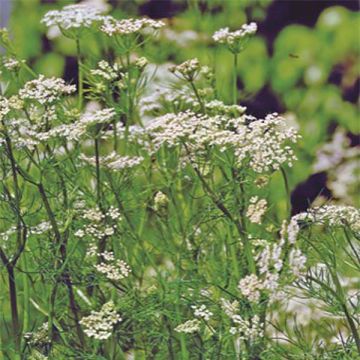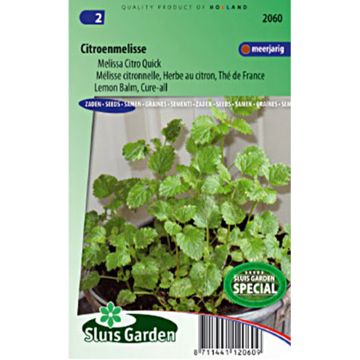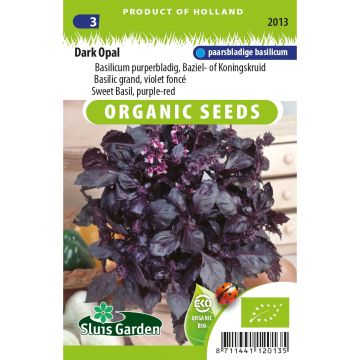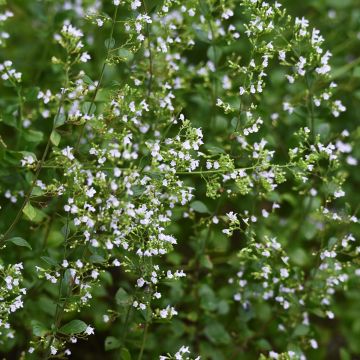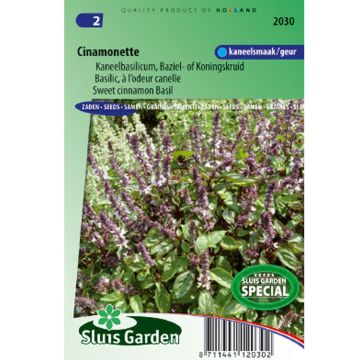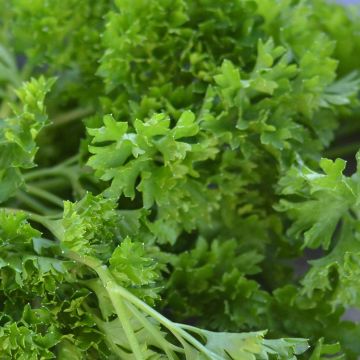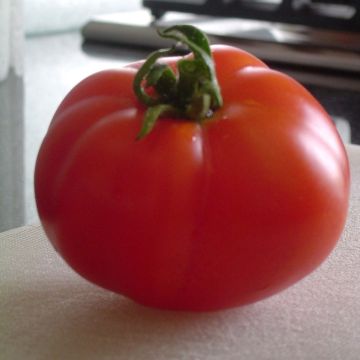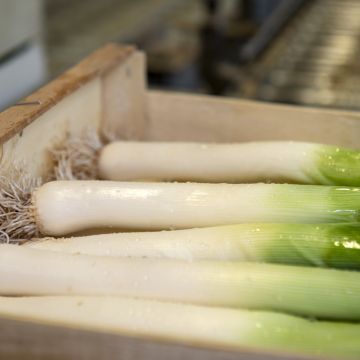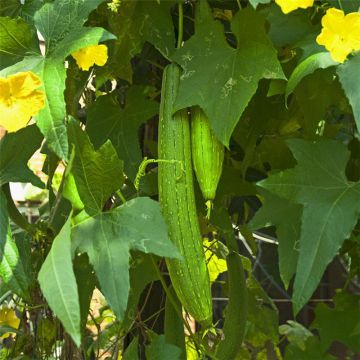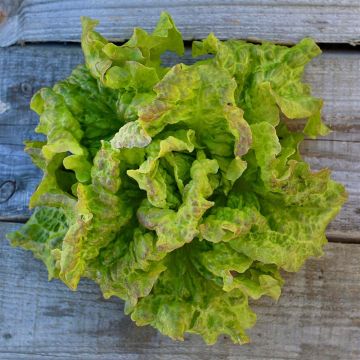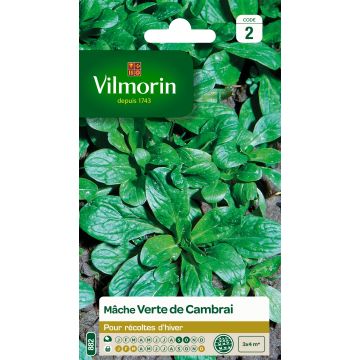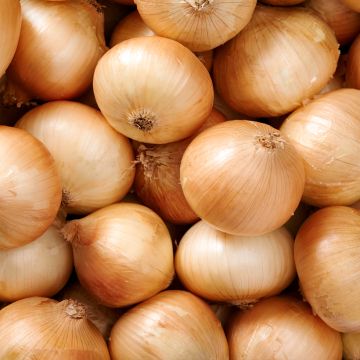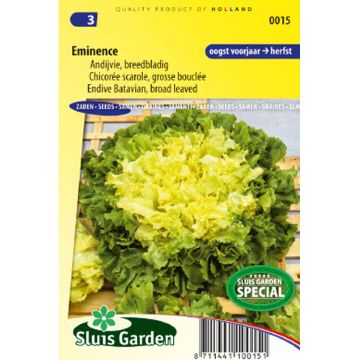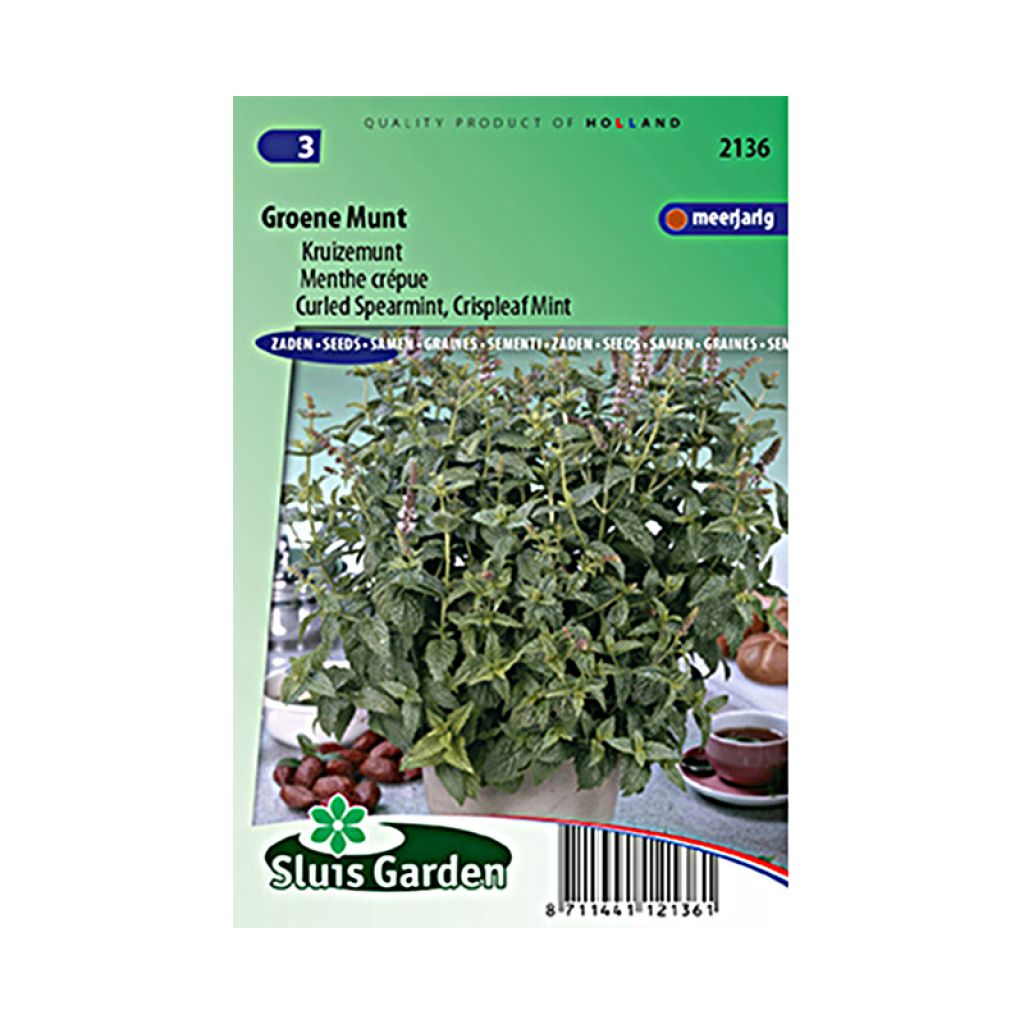

Menthe frisée ou crépue (Graines) - Mentha spicata crispata
Mentha crispata
Mentha spicata Crispata
Spearmint, Garden Mint, Common Mint, Lamb Mint
This item cannot be shipped to the selected country
Dispatch by letter from €3.90
More information
Dispatch by letter from €3.90
More information
Schedule delivery date,
and select date in basket
This plant carries a 6 months recovery warranty
More information
We guarantee the quality of our plants for a full growing cycle, and will replace at our expense any plant that fails to recover under normal climatic and planting conditions.
Seed-only orders are dispatched by sealed envelope. The delivery charge for seed-only orders is €3.90.
Description
The creeping mint is a bushy variety with evergreen foliage. Highly aromatic, its flavour is mild and less mentholated than other varieties, making it particularly interesting in cooking. Its leaves are lanceolate, dentate, and heavily veined. Sowing can be done from March to June, for regular harvesting from May to November.
Fresh mint leaves are used in cooking: sauces, teas, infusions, desserts... Try it in hot chocolate, it's delicious.
Harvesting: Harvest as needed. Choose the most important leaves and cut the entire stem to encourage regrowth. Preferably harvest in the morning to preserve the aromatic qualities of the mint.
Storage: If you don't use the fresh leaves, you can dry them away from light and store them in a tightly closed jar.
Gardener's tip: Mint can quickly become invasive! If you want it in your garden, plant it in a buried pot. It doesn't like being near chamomile. Mint repels black aphids, ants, mosquitoes, fleas, and certain rodents, including mice.
Harvest
Plant habit
Foliage
Botanical data
Mentha
spicata
Crispata
Lamiacées
Spearmint, Garden Mint, Common Mint, Lamb Mint
Cultivar or hybrid
Perennial
Other Herb seeds
View all →Planting and care
Sowing mint seeds:
Sowing can be done under cover in March and April. In open ground, you will have to wait until May and June. Mix the seeds with sand. Spread the mixture over the soil intended for mint. Cover lightly with soil (1 or 2mm). Finally, moisten.
Mint likes rich, deep and moist soils. It does not like limey soils. Add compost to the soil before sowing.
For pot cultivation: choose a deep pot to allow mint to establish well.
Cultivating mint:
Mint requires little care. Some recommendations: water regularly. For pot cultivation, immerse the pot in a bucket of water for a few minutes once a week (more during dry periods). After flowering, cut the plants. The accumulated reserves will make it usable the following year, by dividing the clumps in spring and replanting them. It is advisable to resow every three years and not to replant in the same place for a period of 5 to 6 years.
Seedlings
Care
Intended location
This item has not been reviewed yet - be the first to leave a review about it.
Similar products
Haven't found what you were looking for?
Hardiness is the lowest winter temperature a plant can endure without suffering serious damage or even dying. However, hardiness is affected by location (a sheltered area, such as a patio), protection (winter cover) and soil type (hardiness is improved by well-drained soil).

Photo Sharing Terms & Conditions
In order to encourage gardeners to interact and share their experiences, Promesse de fleurs offers various media enabling content to be uploaded onto its Site - in particular via the ‘Photo sharing’ module.
The User agrees to refrain from:
- Posting any content that is illegal, prejudicial, insulting, racist, inciteful to hatred, revisionist, contrary to public decency, that infringes on privacy or on the privacy rights of third parties, in particular the publicity rights of persons and goods, intellectual property rights, or the right to privacy.
- Submitting content on behalf of a third party;
- Impersonate the identity of a third party and/or publish any personal information about a third party;
In general, the User undertakes to refrain from any unethical behaviour.
All Content (in particular text, comments, files, images, photos, videos, creative works, etc.), which may be subject to property or intellectual property rights, image or other private rights, shall remain the property of the User, subject to the limited rights granted by the terms of the licence granted by Promesse de fleurs as stated below. Users are at liberty to publish or not to publish such Content on the Site, notably via the ‘Photo Sharing’ facility, and accept that this Content shall be made public and freely accessible, notably on the Internet.
Users further acknowledge, undertake to have ,and guarantee that they hold all necessary rights and permissions to publish such material on the Site, in particular with regard to the legislation in force pertaining to any privacy, property, intellectual property, image, or contractual rights, or rights of any other nature. By publishing such Content on the Site, Users acknowledge accepting full liability as publishers of the Content within the meaning of the law, and grant Promesse de fleurs, free of charge, an inclusive, worldwide licence for the said Content for the entire duration of its publication, including all reproduction, representation, up/downloading, displaying, performing, transmission, and storage rights.
Users also grant permission for their name to be linked to the Content and accept that this link may not always be made available.
By engaging in posting material, Users consent to their Content becoming automatically accessible on the Internet, in particular on other sites and/or blogs and/or web pages of the Promesse de fleurs site, including in particular social pages and the Promesse de fleurs catalogue.
Users may secure the removal of entrusted content free of charge by issuing a simple request via our contact form.


































